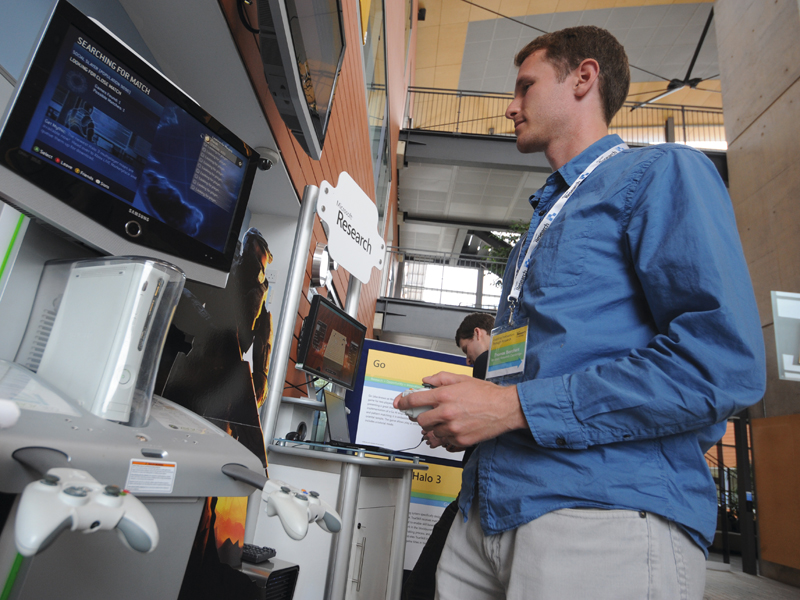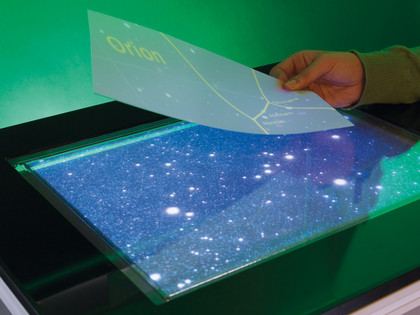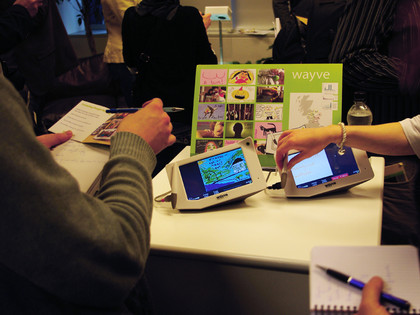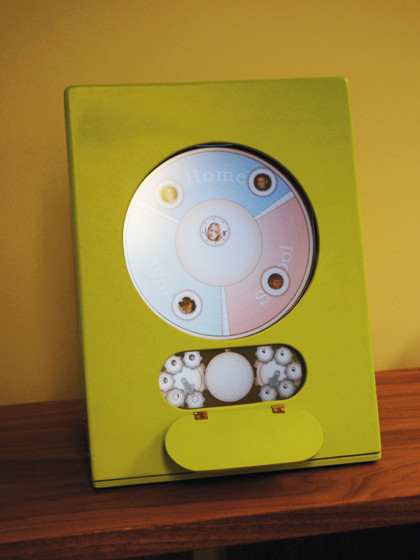Inside Microsoft's UK Research Labs
Six innovative ideas from the Cambridge facility

Dr Andrew Herbert is Managing Director of Microsoft Research, Cambridge, the UK arm of the company's worldwide research machine.
"We're a reservoir of technology; a pool of expertise and smart people. A lot of senior people at Microsoft started in Research and when the company faces challenges it often comes to us," explains Dr Herbert.
"There are no release dates or product roadmaps – it's about understanding and bringing that understanding back into the company."
The Microsoft Research project was founded after PC and microprocessor development dwindled in the mid-90s. The company invested $1bn into researching new innovations, which it hoped would allow the company to widen its horizons.
In 1999 the Cambridge arm was founded to tap into worldwide computing talent at the university, and every major area of the globe has its own research centre. Unlike many businesses around the world, Microsoft Research is centrally funded and doesn't report to any area of the business other than the executive. As such, it's not obliged to create anything that is financially viable, so it can focus on good technology, which in many cases goes on to be used on commercial products.
Despite the wide and often extremely technical nature of the work done by Microsoft Research, you can still see the fruits of its labour everywhere around you.
When the significance of the internet was realised in the 1990s, Microsoft Cambridge made a big commitment to helping the product groups with the initial implementation of IPv6 (a protocol developed by the Internet Engineering Task Force) in Windows.
Sign up for breaking news, reviews, opinion, top tech deals, and more.
It also did a lot of subsequent work in terms of architecture, implementation and standardization for the mobile extensions for IPv6. While the IPv6 innovation was of direct use to Microsoft, other research goes beyond computing.
A researcher in Cambridge caused reaction in the mathematical world by building an automated theorem proving system, which could check the validity of any mathematical problem; it then went on to develop a new proof of the Four Colour Theorem. The technology was later developed into the driver verification system used by Microsoft to promote PC stability and reliability.
Here are some of the technologies linked to the brains at Cambridge…
SecondLight
If you're a fan of hot new technology, you'll have seen Microsoft Surface, the tabletop multi-touch PC that is changing the way we think of computer interaction. Microsoft has added to this by creating SecondLight, touted by many as Surface 2 (it isn't), but it's actually a hardware update to the existing Surface PC that adds some new ideas.

The original Surface PC works with a projector underneath that displays the image on to the tabletop. However, SecondLight adds a second projector and uses some mind-blowing technology to pass the second image through the surface of the table, and on to anything held above without affecting the original image.
It does this by passing an electric current through the membrane of the Surface, which enables light to be passed through. SecondLight has huge implications for teaching and medical training but the technology is staying in the lab for now.
Microsoft Wayve
One of the main remits of Microsoft Research Cambridge is to create humanistic technology designed to help people stay in touch more easily, and Microsoft Wayve is one of the key products helping families to connect. Microsoft Wayve is a communicator for the whole family.
It enables people to leave handwritten notes for each other using the touchscreen interface, and send text messages and emails while away from home. Wayve has its own unique email and phone number so it's easy to communicate from most devices, and it's a great way for families to co-ordinate busy lives.
Wayve brings together everything from a mobile phone, digital photo frame and a whiteboard, and is one of the most entertaining ways to keep the family in touch.

In trials of UK households, messaging was found to be the most common use, with family members scribbling on photos, playing simple games and drawing pictures. Unlike many Microsoft Research projects, Wayve is destined for life in the outside world, so watch this space for an official release.
Whereabouts Clock
This concept product has little chance of seeing the light outside of the Cambridge research centre…

The Whereabouts Clock is a Harry Potter-style magic map panel that shows you where each member of the family is at any given time. Like the magic map in the film, locations are denoted by pictures of the family, floating between three places such as school, work and home.
Family members can text the clock where they are and what they're doing, so you can be assured that your children are safe, and that's it's time to put the dinner in the oven. The clock tracks the location of the family using automated text messages from the family's mobile phones. When a family member's phone is on, it automatically transmits SMS messages to the device when that person moves from one registered zone, such as home, into another registered zone, such as school.
Family members can also text the magic clock more specific information about their activities in each zone. So, for example, if a person is 'out' but shopping, they can text 'shopping' and the text appears under the person's picture on the clock.
- 1
- 2
Current page: SecondLight, Wayve and the Whereabouts Clock
Next Page TrueSkill, Somniloquy and forest analysis